July, 2007

From MyLovelyBeads.com TeamIn the second issue of our MyLovelyBeads.com newsletter:
Carnelian - self-esteem stone
We respect your opinion and would appreciate hearing suggestions concerning this
newsletter, improvement of our beadwork and service, and website. You can contact
us at info@mylovelybeads.com.
New on the site - ring collection Featured artist Necklace length and Carat or Karat? Casual remark - confusing gem names |
Carnelian - self-esteem stone
The word carnelian is derived from the Latin word meaning horn, in reference to the flesh color sometimes exhibited. Carnelian is said to be a motivation stone and some have called it the "self-esteem stone". Certainly, gemstone beads of carnelian would give the wearer better self-esteem just by their beauty alone. Carnelian has the interesting property that hot wax does not stick to it, that is why it was used widely during Roman times 2,000 years before the present era to make signet or seal rings for imprinting a security seal with wax on correspondence or other important documents. The mineral is found worldwide, but India is reputed for developing the best gemstones. Other significant sources include Brazil and Uruguay. In jewelry making it is most often cut into either beads or cabochons, but occasionally it is carved. The carnelian beads are made by heating and shaping agate several times, resulting in a change of color. The resultant beads are drilled with a stone drill. Some beads are over 12 centimeters in length. Today, the entire process is the work of professional craftsmen whose technology has been handed down from generation to generation. On the picture - wax carved carnelian seal on an envelope. |
|
New on MyLovelyBeads.com
• Types and Colors of Garnet
• Wedding Anniversary Stones • Symbols of the US States • Jasper from White to Black • Beryl Family of Gemstones • About Multicolor Agate |
|
Featured artist
|
|
Do you know?NECKLACE LENGTH
A necklace is an article of clothing or jewelry; which is worn around the neck. Necklaces
are frequently formed from a metal chain; often attached to a locket or pendant. Types of
necklaces:
• Choker: a choker is 12" to 16" long. It sits on the base of the neck or wraps around the throat.
• Princess necklace: a princess necklace is 17" to 19" long. It is between choker and matinee length. • Matinee necklace: a matinee necklace is 20" to 25" long. It should sit at the top of cleavage. • Opera necklace: an opera necklace is 26" to 36" long and should sit at the breastbone. • Rope (sautoir) necklace: a rope necklace is over 36" long. CARAT and KARAT Carat is the unit of weight used for precious stones; one carat equals 1/5 of a gram or 3 and 1/16 grains. The diamond carat is subdivided into 100 parts or points; thus, a fifty-point diamond is equal to 1/2 of a carat. The carat is not related to the term karat that is a unit of the fineness or purity of gold. Karat is the measurement of the fineness or purity of gold. The pure (fine) gold is 24 karat. 18K is 75% fine gold, 14K is 58.4%, and 10K is 41.7%. 14K and 10K are not manufactured or sold outside of the USA. The karat is not related to the term carat, a unit of weight, whose origins come from the carob seed. |
|
Casual remark
|
© 2010 MyLovelyBeads.com All Rights Reserved.
If you do not want receive our newsletter and you wish to remove your email address from our mailing list, please click the following link to unsubscribe.



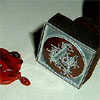
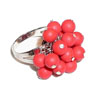
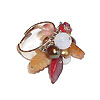
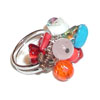
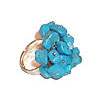

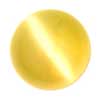 Some of the gem names are very confusing. All of us have heard about cat's eye. The natural
cat's eye is a translucent yellowish chatoyant chrysoberyl (sometimes is is called cymophane),
this variety of chrysoberyl exhibits pleasing chatoyant or opalescence that reminds one of
an eye of a cat. Some sellers call cat's eye any of a variety of gems, such as some forms of
chalcedony, that are chatoyant when cut in a rounded shape. But there is one more cat's eye -
manmade glass that reflects light in a way reminiscent of a cat's eye, and this gem can be
pink, blue, green, black - of almost any possible color!
Some of the gem names are very confusing. All of us have heard about cat's eye. The natural
cat's eye is a translucent yellowish chatoyant chrysoberyl (sometimes is is called cymophane),
this variety of chrysoberyl exhibits pleasing chatoyant or opalescence that reminds one of
an eye of a cat. Some sellers call cat's eye any of a variety of gems, such as some forms of
chalcedony, that are chatoyant when cut in a rounded shape. But there is one more cat's eye -
manmade glass that reflects light in a way reminiscent of a cat's eye, and this gem can be
pink, blue, green, black - of almost any possible color!
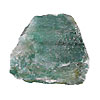 Another example is aventurine. Natural aventurine is a shimmering quartz stone that ranges in
color from yellow to red to light green to blue to light brown. The shimmer is caused by tiny
metallic particles within the stone. Because of golden glitter aventurine is sometimes also
called goldstone. Another aventurine is a shimmering glass with golden glitter due to copper
crystals suspended in or pressed into the surface of other materials, this gem is manmade and
is usually bright brown to almost black.
Another example is aventurine. Natural aventurine is a shimmering quartz stone that ranges in
color from yellow to red to light green to blue to light brown. The shimmer is caused by tiny
metallic particles within the stone. Because of golden glitter aventurine is sometimes also
called goldstone. Another aventurine is a shimmering glass with golden glitter due to copper
crystals suspended in or pressed into the surface of other materials, this gem is manmade and
is usually bright brown to almost black.